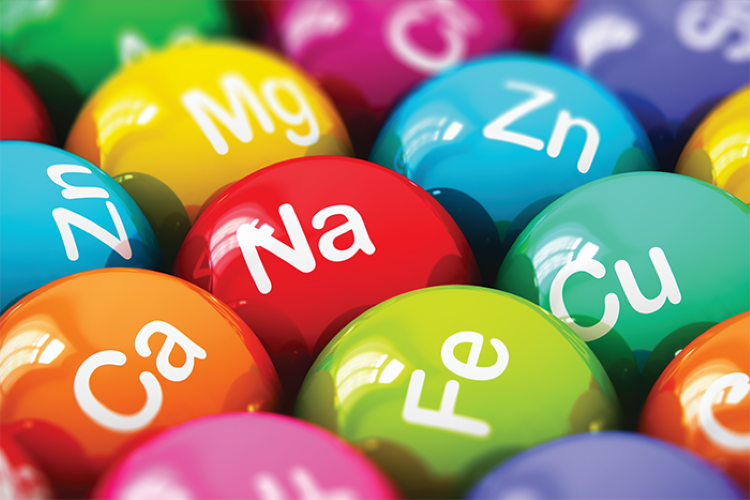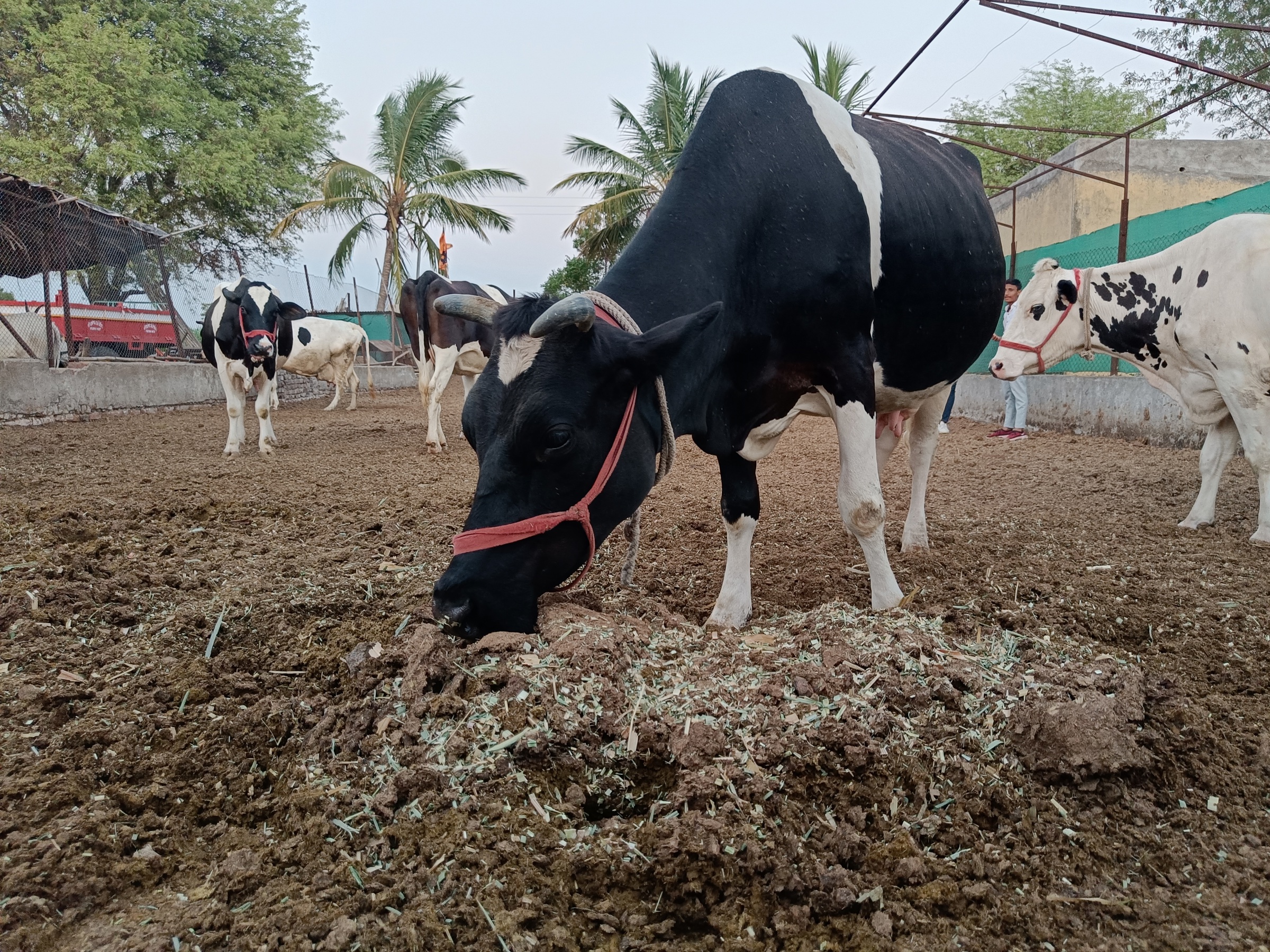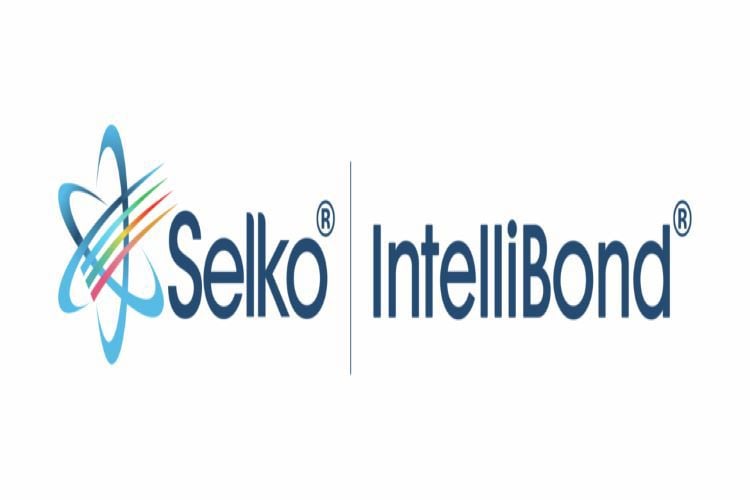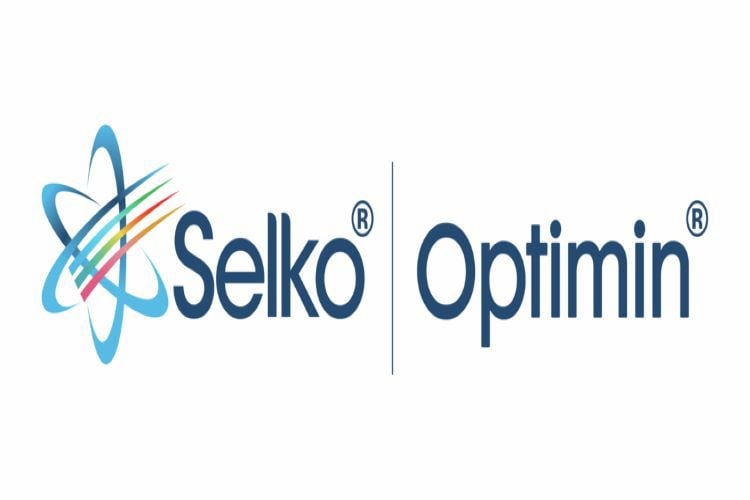
A first step to managing cow mineral supplementation is to always determine the correct level of trace metal that is required above the trace metal levels that are present in basal ration ingredients to meet the total requirement of trace minerals for cattle. Subsequently, the correct level and source of trace cattle mineral can be selected. This will ensure dairy cattle are receiving a consistent level of essential trace metals needed to support optimized well-being and productivity. When considering what source of trace minerals for cattle should be selected there are five targets.
Maximize essential stability of many key nutrients that have been added to dairy cattle mineral supplements
Reactive trace minerals for cattle such as sulfates can have a negative impact on the stability and bioavailability of other essential nutrients (vitamins, fats, probiotics, prebiotics, amino acids) contained within dairy cow mineral supplements. Cattle mineral sulfates are commonly referred to as pro-oxidants, which simply means they will react with other unstable molecules present within the feed. Copper and zinc can quickly accelerate the oxidation of unprotected fat sources in the feed, negatively impacting the value of the fat as well as several fat-soluble vitamins. If the feed is being pelleted, the moisture present within the pelleting process can ionize the metals allowing them to function as antimicrobial agents against expensive probiotics that may have been added to the feed. Hydroxy trace cow mineral sources do not have any of these negative effects on the availability of essential nutrients present in the feed.
Use the right source of cattle minerals to maintain a high level of rumen efficiency
Sulfate trace minerals for cattle are highly soluble in the rumen, resulting in high levels of reactive metals negatively impacting the rumen function of dairy cows. While these characteristics may be of value when copper and or zinc sulfate are used in a foot bath, they quickly become problematic when used to deliver essential trace metals in mineral supplements for dairy cattle. Reactive sources of trace cow minerals have a negative impact on rumen microflora, significantly reducing NDF digestibility in the rumen. An independent study105 showed that replacing sulfate trace minerals in dairy mineral supplements entirely with hydroxy trace minerals eliminated this negative response, resulting in an average 3-point improvement in NDF digestibility. A recent quantitative summary102 evaluating 11 independent comparisons of cattle mineral sources found that feeding mineral supplements for dairy cattle that contain copper and zinc sulfate as a cattle mineral source had a statistically significant, negative impact on NDF digestibility in lactating dairy cattle, resulting in a 1.7-points decline of NDF digestibility. University research has shown that each one-point difference in NDFd can represent 0.25 to 0.3 kgs of daily milk production.
Using cattle mineral supplementation to improve gut barrier function
More recent work with trace minerals for cattle shows that the higher bioavailability of zinc resulting from feeding dairy cattle mineral supplements containing the hydroxy form of cow mineral has a positive effect on the immune system and gut wall tissue integrity. This improves gut barrier function, reducing the risk of “leaky gut” and systemic inflammation as a result of feeding trace minerals to dairy cattle during periods of stress.
No loss of nutrients due to unnecessary tie-up in the rumen and gastrointestinal tract
Cattle mineral products containing highly soluble trace minerals for cattle such as sulfates can significantly reduce the amount of trace metal and other essential nutrients that are available for absorption in the intestinal tract. When sulfate trace minerals encounter moisture, they quickly break down, releasing their metal ions within the rumen. This allows the ion to form an unavailable complex with many essential nutrients such as phytates, other trace and macro minerals, oxalates, and amino acids, forming new complexes that are no longer of any value to the dairy animal.
If dairy mineral supplements containing hydroxy trace minerals are being used, these hydroxy trace minerals for cattle essentially bypass these negative effects in the rumen. This results in more biologically available trace metal arriving in the intestinal tract for absorption, while not affecting the availability of other essential nutrients in the ration.
Cattle mineral supplementation with minimal impact on the environment
Cattle mineral supplementation should have a minimal impact on the environment. If trace minerals for dairy cattle are feed and not absorbed by the animal, the cow mineral will end up in the environment. This result is not limited to trace minerals for cattle being fed to the animal but also affects the essential nutrients and additives the trace metal ion has bonded with, such as phosphorus, phytates, mycotoxin binders, etc. Dairy cattle mineral supplements containing hydroxy trace mineral sources can significantly reduce the amount of metal complexes that are expelled into the environment by improving the absorption of essential metals and other essential nutrients from the ration.


